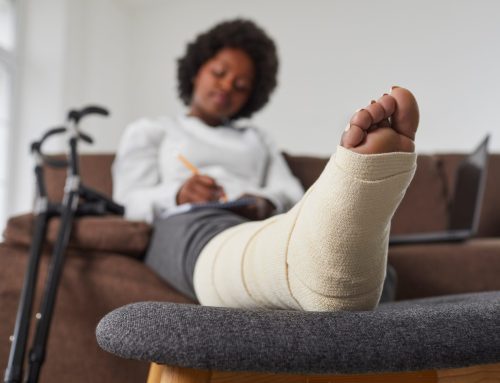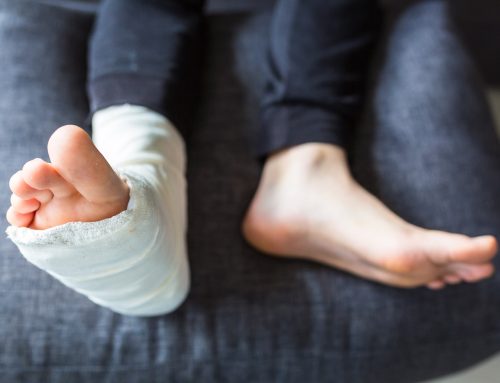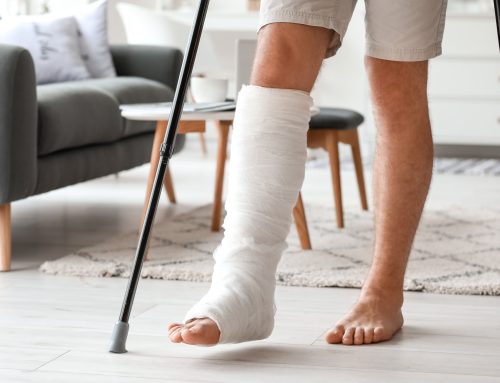It comes as no surprise that postmenopausal women may have an increased fracture risk if they’ve lost 5% or more of their weight. Less bone density due to unplanned weight loss can increase your risk of a hip fracture to 65% alone! However, the controversy begins when it comes to weight gain in postmenopausal women. After all, shouldn’t fat cushion a fall to absorb the shock and lessen the risk? While that may be somewhat true for hip fractures, it’s not valid for all. Our article will highlight the first longitudinal study recorded that observed women over 50 years old and under 80 in respect to how weight change affected fracture risk in postmenopausal women.

Weight Change and Fracture Risks in Postmenopausal Women
While weight gain and weight loss are linked to increased fracture risk, there are other factors that physicians should consider. While the location of the fracture may differ, the key takeaway is to recognize the patterns after weight gain or loss has occurred and if it is happening unintentionally or on purpose.
The Study and its Methods
Over 120,000 healthy postmenopausal women from 1993 to 1998 participated in the Women’s Health Initiative Observational Study and Clinical Trials. Over an average of 11 years, these women were self-reporting fractures. The study noted their age, ethnicity, body mass index (BMI), alcohol intake, physical activity levels, how much calcium and vitamin D they were getting, and if they smoked.
While these women volunteered, they were cleared to be part of the study after proving to be free of any severe cardiac, renal, pulmonary or hepatic conditions. Keep in mind that these women completed self-assessment questions while having their weight and height measured initially and at their follow-ups to calculate their BMI.
The lead author on the study, Carolyn Crandall, MD, who works at the University of California, Los Angeles, School of Medicine as an internal medicine physician, had insight for physicians and the red flags they should look out for. “Women with both unintentional and intentional weight loss should be viewed as having increased fracture risk. Physicians should recognize the different patterns of fracture risk that occur with weight gain and weight loss in postmenopausal women.”
With this in mind, all women were observed for any weight loss patterns and were questioned on weight loss to track intentional vs unintentional fluctuations.
The Results
It turns out, the controversial topic of weight change and fracture risk in postmenopausal women resulted in both weight gain and weight loss as contributing factors to greater risk of a fracture. However, which part of the body was at risk did differ.
Weight Loss of More Than 5%
Women who lost any more than 5% of their body weight over three years compared to women whose weight remained stable had a greater risk of fractures in the hip, central body, and upper limb.
- The hip risk increased by 65%.
- The central body (hip, pelvis and spine) increased by 30%.
- The fracture risk of the upper limb (hand excluding fingers, elbow, lower arm/wrist, upper arm/humerus and shoulder) increased by 9%.
Weight Gain of More Than 5%
On the other end of the spectrum, women who gained more than 5% of their body weight over three years had an increased fracture risk of the upper body and lower limb.
- The upper body increased by 10%.
- The lower limb (knee, upper leg excluding hip, lower leg/ankle and foot excluding toes) had an increased fracture risk of 18%.
Based on these results, the study observed that a lower BMI correlates with an increased risk of hip fracture, spine and wrist while a higher BMI has a greater risk of ankle fractures and upper body.
Variables
One keynote regarding weight change related to fracture risk is intention. Postmenopausal women with unintentional weight loss of at least 10 lbs over a year have a 15% increased risk of fracture on any area of their body, with an even greater risk with the spine, hip, and clavicle.
“The distinction is important because unintentional weight loss is often associated with coexisting conditions that may independently cause increased bone loss and fracture risk,” Juliet E. Compston, MD, professor of bone medicine at Cambridge Biomedical Campus and colleagues wrote. She also concluded that intentional weight loss is more common in overweight women.
Another variable to consider is that studies that rely on self-reporting could have data defects based on inconsistent memory or inability to measure accurately.
Key Take-Away on Weight Change and Fracture Risk in Postmenopausal Women
While past studies have argued that weight gain does not contribute to an increased risk of fractures and could help prevent the severe impact that results in a hip fracture, Dr. Crandall partly agreed with this hypothesis. While weight gain isn’t directly associated with an increase in hip fractures, other areas of the body that have less soft-tissue padding, such as upper limbs and ankles, will suffer the increased risk.
Have you suffered from a fracture and want to return to your regular routine sooner? Our staff at Fracture Healing specializes in innovative solutions that empower faster fracture healing and help patients take control of their health. Contact us to get more information on the device and support that can bring you closer to pre-injury living.
Have you suffered from a fracture after a recent weight loss or gain? What steps did you take to start the healing process? Do you have any questions about fracture risk in postmenopausal women? Comment below and help others talk about their health!





